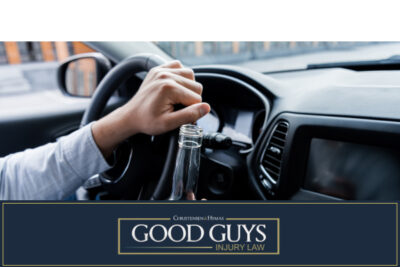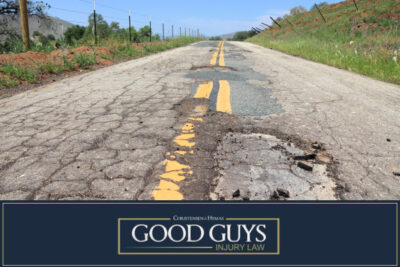
Bike accidents can happen suddenly and have severe consequences. Knowing the causes of bicycle crashes is critical for both riders and drivers. It helps identify safety precautions and how to avoid dangerous situations. This knowledge is especially important in Utah, where varied terrain and weather conditions can increase risks.
At Good Guys Injury Law, we know that bike accidents occur when people least expect them. Fatal bicycle accidents can come from biking into a car door, a busy intersection, or a heavy truck. Each motor vehicle operator and cyclist must put safety first.
Discover how to avoid bicycle accidents below. Then, contact us to schedule a free consultation.
Table of Contents
Importance of Understanding Utah Bicycle Accident Causes
Knowing the causes of bicycle accidents helps create safer roads and prevent future incidents. Both policymakers and cyclists need to know these factors to improve road safety measures. This awareness also aids in developing more effective cycling infrastructure, such as dedicated bike lanes and clearer signage.
Knowing the intricate details of how and why bicycle accidents happen provides insights into liability and compensation for legal professionals. This knowledge is important for defending or prosecuting cases related to bike accidents.
Furthermore, it helps victims of bicycle injuries receive the justice and compensation they deserve. Clear comprehension of these causes also educates the public, leading to more mindful and safe interactions on the road.
Driver Negligence

Driver negligence is a frequent cause of bike crashes. When drivers fail to observe the presence of cyclists, they endanger lives. Negligence can include behaviors like not checking mirrors for bicyclists or ignoring the bike lane. Every driver must be aware of their surroundings and ensure they do not pose a risk to others.
Distracted Driving
Distracted driving is a major threat to cyclists. It occurs when drivers are not fully focused on the road—perhaps using a phone, adjusting the radio, or eating while driving. This inattention can lead to overlooking critical cues, like cyclists entering the roadway from a bike path. The consequences can be catastrophic, often leading to traumatic brain injuries or worse.
Failure to Yield

Many bicycle accidents occur because drivers do not yield the right of way to cyclists. This can happen at intersections, bike lane merges, or when making turns.
Drivers must know traffic laws related to bicyclists and respect their right to share the road. Failure to do so leads to accidents and can result in heavy legal penalties.
Speeding
Speeding reduces a driver’s ability to react to sudden changes in the road environment, such as a cyclist navigating around parked cars. It also increases the severity of bicycle injuries in the event of a crash. Maintaining legal speed limits and adjusting speed in cyclist-heavy areas is vital for safety.
Drunk Driving

Drunk driving is dangerously irresponsible and increases the risk of causing bike accidents with fatal injuries. Alcohol impairs judgment, coordination, and reaction times, making it nearly impossible for drivers to go around cyclists safely. It is illegal and morally reprehensible to drive under the influence, as it puts innocent lives at risk.
Cyclist Error
Cyclists, too, can contribute to accidents through their own errors. It’s important to acknowledge and address these behaviors to ensure everyone’s safety on the road.
Riding Against Traffic
Riding against traffic is risky and illegal. Cyclists should always ride in the same direction as other motor vehicles. This reduces confusion and the likelihood of a collision, as drivers typically do not expect to see bikes coming from the opposite direction.
Ignoring Traffic Signals
Ignoring traffic signals can lead to dangerous intersections and collisions with other road users. Cyclists must follow the same traffic laws as drivers, including stopping at red lights and following road signs.
Lack of Visibility (No Lights/Reflectors)
Riding without adequate lighting or reflectors considerably increases the risk of an accident, especially at night or in poor weather conditions. Visibility is key to safety, and using lights and reflectors can alert drivers and other cyclists to your presence on the road.
Road Conditions

Road conditions can notably affect cycling safety, and poorly maintained roads can be hazardous for cyclists.
Potholes and Uneven Surfaces
Potholes and poor roads can cause cyclists to lose control or unexpectedly veer into traffic. Regular maintenance and quick repairs are critical to preventing such accidents.
Debris on the Road
Debris, like gravel, branches, or trash, can be particularly dangerous for cyclists. These items can cause slips or sudden stops, leading to crashes.
Poor Lighting
Areas with poor lighting pose a high risk to cyclists, making it difficult for them to see road hazards or for drivers to see them. Enhancing street lighting can greatly improve safety for everyone.
Weather Conditions
Weather plays a big role in cycling safety, and adverse conditions can greatly increase the risk of accidents.
Rain and Slippery Roads
Rain makes roads slippery and reduces tire traction, making it harder for cyclists to maintain control. Wet conditions also affect braking distance and visibility, increasing the risk of accidents.
When riding in the rain, it’s important to slow down and allow more time to stop. Using tires with good tread can help maintain better traction on wet surfaces.
Fog and Reduced Visibility
Fog can dramatically reduce visibility, making it hard for drivers and cyclists to spot each other. If not approached with caution, this can lead to accidents.
Cyclists should use lights and wear reflective clothing to make themselves more visible in foggy conditions. Reducing speed and using extra caution at intersections and crossings is also wise.
Strong Winds
Strong winds can push cyclists unexpectedly, making it difficult to stay in the bike lane or maintain a straight path. This is particularly challenging on open roads or bridges with little shelter from the wind.
Cyclists should lean into the wind slightly to counterbalance the force and keep a firm grip on the handlebars. It is also advisable to avoid riding in extremely windy conditions when possible.
Mechanical Failures
Even well-maintained bicycles can experience mechanical failures that lead to accidents.
Brake Failures
Brake failures are dangerous and can occur without warning, putting cyclists at severe risk. Regular maintenance is needed to ensure brakes are always in good working condition.
It’s important to check your brakes regularly and have them serviced by a professional if you notice any issues. This preventative measure can be life-saving, keeping brakes responsive when needed.
Tire Blowouts
Tire blowouts can cause sudden loss of control, making them critical issues for cyclists. Proper tire inflation and swapping tires when worn out are essential for safety.
Regular inspections can detect early signs of wear and tear, preventing blowouts on the road. It’s also a good idea to carry a repair kit for emergencies.
Chain Malfunctions
Chain malfunctions can abruptly stop a bike or cause cyclists to fall, leading to potential injuries. Regular checks and maintenance can prevent these issues by properly lubricating and adjusting the chain. To maintain safe cycling conditions, a worn or rusted chain should be replaced immediately. Always inspect your chain before long rides.
Preventive Measures for Cyclists
Taking proactive safety measures can reduce the risk of bike accidents. Here are some tips for cyclists to stay safe on the road.
Safety Tips and Best Practices
- Be visible: Always wear lights and reflective clothing, especially during low-light conditions.
- Follow traffic laws: Obey all traffic signals and signage to avoid unexpected situations.
- Stay alert: Keep an eye on your surroundings and anticipate the actions of drivers and other cyclists.
- Use proper gear: Helmets and protective gear are essential for reducing the risk of severe injuries.
- Maintain your bike: Regularly check your bike’s condition, focusing on brakes, tires, and lights.
- Plan your route: Choose routes with less traffic and better infrastructure, like dedicated bike paths.
- Signal intentions: Always use hand signals to communicate your turns and stops to other road users.
Importance of Wearing Helmets and Protective Gear
Wearing helmets and protective gear is non-negotiable for cyclists. Helmets protect against traumatic brain injuries, which can be life-altering. Pads and reinforced clothing can prevent cuts, scrapes, and worse during falls. Make wearing your safety gear a routine part of your cycling habit.
Trust Our Utah Bike Accident Lawyer: Schedule a Free Case Consultation

If you or a loved one have been involved in a bike accident, getting legal advice is pivotal. Our Utah bike accident lawyers at Good Guys Injury Law are here to help. We know the intricacies of bike accident cases and can guide you through the process of seeking compensation.
Contact us today to schedule a free case consultation.
